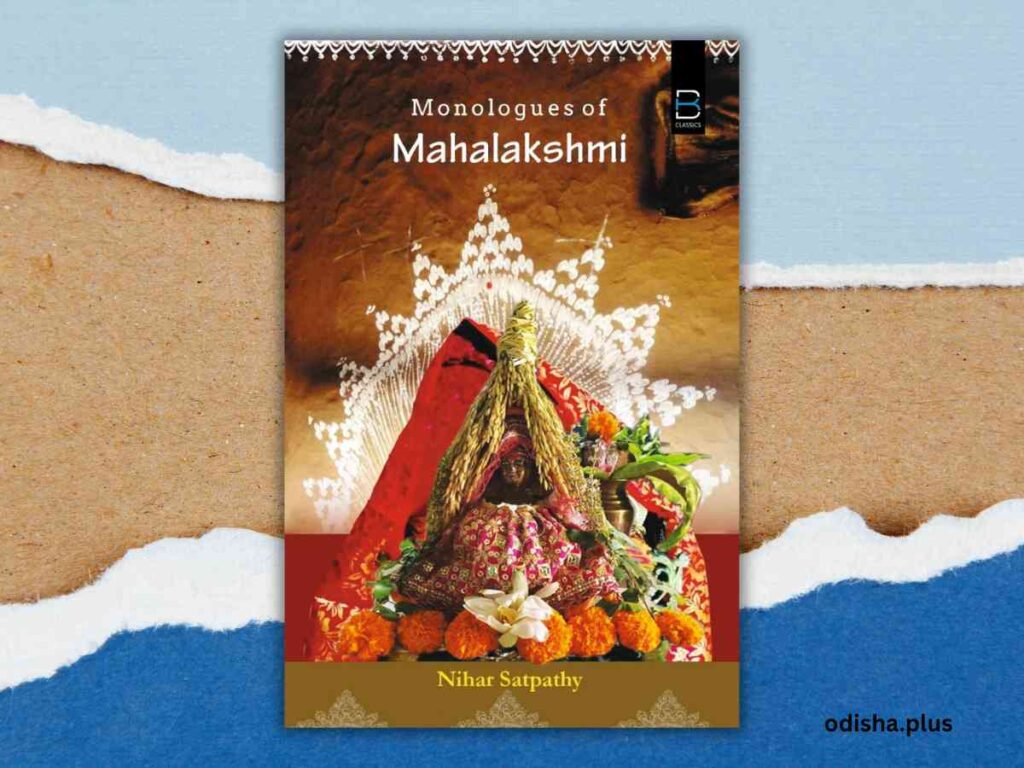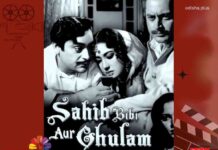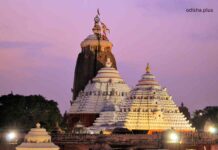‘Monologues of Mahalakshmi’ offers a captivating connection to the folklore of Goddess Mahalakshmi, presented in a manner that resonates with modern readers
Bhaskar Parichha

‘Monologues of Mahalakshmi’
Nihar Satpathy
BK Classics
Bhubaneswar
Lakshmi Purana holds a significant position in Odisha’s sacred texts and cultural heritage. Written by the 15th-century poet Balarama Das, a key figure in the Panchasakha period of Odia literature, it is an essential mythical work. Its social teachings remain highly relevant even today.
According to legend, the Goddess Lakshmi once visited a low-caste scavenger woman named Shriya. This visit angered Balarama, Jagannatha’s elder brother, leading to Lakshmi being expelled from the Puri temple. In response to this insult, Lakshmi cursed her husband and brother-in-law to endure a long period without food, water, or shelter.
Lakshmi Purana speaks out against the harmful practice of ‘untouchability.’ It also highlights the significance of feminism and encourages women to stand up against male dominance.
Manabasa Gurubara is a weekly celebration of Goddess Laxmi, adding to the temple story. This significant ritual occurs in Odia homes every Thursday during a specific month. The Lakshmi Purana is also honored in nearby regions like Chhattisgarh, Jharkhand, West Bengal, and Andhra Pradesh. Women perform a special Lakshmi Puja for a month in the Hindu month of Agrahayana or Margasira, which is in December.
This tradition is recognized as important and is part of India’s National List of Intangible Cultural Heritage (ICH). The Lakshmi Purana is considered one of the first literary works in India to challenge caste systems and emphasize women’s roles in society.
Nihar Satpathy’s ‘Monologues of Mahalakshmi’ retells this significant story through fiction. This short novel, around a hundred pages long, reflects the moral values of medieval times. The book connects with the folklore of Goddess Mahalakshmi and is presented in a way that appeals to modern readers.
Nihar Satpathy, a former banker with diverse interests, has also worked in media. He edits an online Odia literary magazine and has previously published two books.
The monologues presented in Mahalakshmi’s descriptive style are quite captivating, drawing readers into a world steeped in rich cultural heritage and spiritual significance. The author skillfully weaves together narratives that not only entertain but also educate, making the text accessible and engaging for a diverse audience.
Notably, the author has highlighted a legend that has been integral to Odia culture for centuries, showcasing the deep-rooted traditions and beliefs that shape the identity of the region. This work is sure to rekindle interest in the remarkable divine relationship between Lord Jagannath and Goddess Mahalakshmi, a bond that is celebrated and revered by devotees and scholars alike.
Richly illustrated by the talented artist Baladeva Maharatha, the book is visually stunning, with illustrations that complement the text and enhance the reader’s experience. Each page is adorned with vibrant imagery that brings the stories to life, allowing readers to immerse themselves fully in the narrative.
The cover, designed by Sushil Pohan, is equally impressive, capturing the essence of the tale and inviting readers to explore the pages within. This fable offers an engaging reading experience that appeals to both the heart and the mind, making it a delightful addition to any bookshelf.
It is encouraging to see that the book has reached its second edition, a testament to its popularity and the resonance it has found with readers. The author’s effort to introduce a unique tradition linked to the Puri Jagannath temple to non-Odia readers is commendable, as it not only broadens the audience for this rich cultural narrative but also fosters a greater understanding and appreciation of Odia heritage.
By bridging the gap between cultures, the author invites readers from all backgrounds to partake in the beauty and significance of these timeless legends, ensuring that the stories of Lord Jagannath and Goddess Mahalakshmi continue to inspire and enchant future generations.
(The author is a senior journalist and columnist. Views expressed are personal.)

























